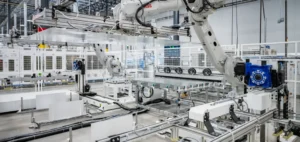In 2023, renewable energies continue to prove their competitiveness against fossil fuels.
According to data published by the International Renewable Energy Agency (IRENA), 81% of new capacity installed this year had lower costs than fossil-fuel plants.
This cost differential underlines the strategic advantage of renewable energies in a context of growing pressure to accelerate the energy transition.
Of the 473 gigawatts (GW) of additional capacity in 2023, 382 GW will come from renewable projects, reinforcing the deployment momentum. The continuing decline in the cost of technologies such as solar photovoltaics and onshore wind power is contributing to this increased competitiveness.
Investments in these sectors are continuing, driven by expectations of stable yields and significant fuel savings, a decisive factor for decision-makers and investors in the sector.
Lower costs, higher technology
Renewable technologies, particularly photovoltaic solar power, have seen their costs fall dramatically.
In 2023, solar energy is on average 56% cheaper than its fossil and nuclear equivalents.
The average cost of solar photovoltaic electricity reached 4 USD cents per kilowatt-hour.
This substantial reduction is the result of technological advances and optimized supply chains, which make solar projects increasingly economically attractive, even without direct subsidies.
Onshore wind power, meanwhile, continues to evolve, with costs falling by 3% by 2023, according to IRENA figures.
At the same time, offshore wind power is recording a 7% drop, demonstrating the growing economic viability of this technology.
These results show that renewable energies, once integrated into power grids, bring sustainable economic benefits for operators, while limiting dependence on fluctuating fossil fuel prices.
Storage: a key element in the transition
Energy storage, particularly via batteries, plays a central role in the integration of highly variable renewable energies such as solar and wind power.
Between 2010 and 2023, the costs of battery storage systems fell by 89%, facilitating the integration of renewable energies into global energy grids.
This trend is set to continue, boosting the adoption of renewables in markets where intermittency has long been an obstacle to large-scale deployment.
By 2023, Asia will have recorded the largest savings linked to the integration of renewable energies, estimated at 212 billion USD since 2000.
This momentum is driven by sustained investment in storage infrastructure and new solar and wind capacity.
Europe and South America follow, with savings of 88 billion and 53 billion USD respectively over the same period, illustrating the positive economic impact of renewables.
Outlook and growth strategies
To meet the goals of decarbonization and energy independence, governments and investors around the world continue to support renewable energies on a massive scale.
According to IRENA forecasts, global renewable energy capacity is set to triple to 11.2 terawatts (TW) by 2030.
This acceleration will result in an average increase of 1,044 GW of new installations per year, with a large proportion coming from solar and onshore wind technologies.
With this dynamic comes a growing need for grid infrastructure adapted to the variability of renewable energies.
Political decision-makers are called upon to align their strategies and put in place appropriate support mechanisms, particularly in terms of storage and modernization of electrical infrastructures, to meet future needs.
Still competitive costs in emerging economies
Emerging economies outside the Organisation for Economic Co-operation and Development (OECD) benefit particularly from the savings generated by renewable energy projects.
In these regions, where demand for electricity is rising rapidly, renewable capacities, with their lower costs than fossil-fuel projects, offer an immediate solution for reducing power system costs.
In Africa and Latin America, governments and investors have accelerated solar and wind power projects, attracting international funding to develop the necessary infrastructure.
The long-term reduction in electricity production costs thanks to renewable energies represents a strategic asset for these regions, enabling them to meet growing needs while minimizing the financial risks associated with fluctuating fuel prices.






















